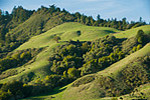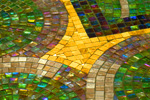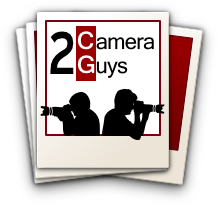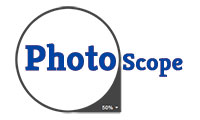Best DSLR Cameras under $1000
- The Shootout
- Sony a65 Review
- Canon T4i Review
- Canon T3i Review
- Nikon D5100 Review
- Nikon D3200 Review
Sony a65 Review
Of the five cameras in this shootout, when I am running out the door, the Sony a65 is the one I would grab.
This preference is not just based on specifications. A relationship with a camera is a very personal one. Often, it's love at first grip, but ultimately the bond is established through a series of positive reinforcements and a minimum of disappointments.
To begin, with the a65, the ample grip with the extra indentation gives you a solid, comfortable handhold. Next, the high resolution OLED viewfinder is a delight.
The camera is quick and responsive. And most importantly, the image quality is rewarding.
Is there any wonder why the Sony a65 has won the 2 Camera Guys Award for Best Mid-range DSLR Camera.
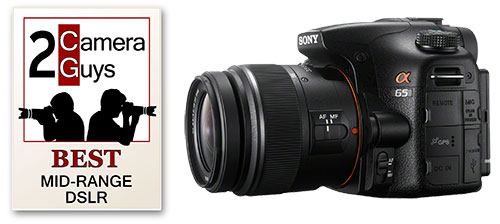
What's Hot about the Sony a65
- 24MP CMOS APS-C sensor
- Excellent image quality and dynamic range
- Bright and high resolution electronic OLED viewfinder
- Translucent mirror system allows always-on Live View
- Up to 10 fps continuous full resolution shooting
- Ample hand grip and good overall balance
- Panorama, 3D and HDR shooting modes
- Integrated image stabilization
- 1080p video at multiple frame rates
- Built-in GPS
What's Not So Caliente about the Sony a65
- At least $200 more than other cameras in the shootout
- Translucent mirror system reduces the amount of light hitting the sensor
- Notable noise at ISOs over 1600
- Should shoot RAW files to obtain full image quality
- Full resolution 24MP files strain less powerful computers and gobble hard drive space
Design
One of the foundations for many of the Sony a65's design elements is the translucent mirror system. (In fact, the SLT in the model number, Alpha SLT a65, stands for Single Lens Translucent.)
Traditionally, DSLRs employ a mirror that sits behind the lens and reflects the image (in the form of light) up to the optical viewfinder, where you can frame and focus your photo.
When you press the shutter release, the mirror flips up out of the way and light hits the sensor, "exposing" your image.
With the newer DSLRs, like the Canon and Nikons in this shootout, to switch into Live View mode, the mirror flips up and stays there until you are ready to snap your photo. Then the mirror drops down and then up again, causing a slight delay in the process.
The a65 still has a mirror located in the same spot, but it's translucent, letting about 80% of the light to pass through. The rest is reflected to a phase-detection autofocus sensor.
To view the image for focusing and framing, the camera captures it from the main sensor and either displays it on the three-inch LCD screen or onto the a65's high resolution OLED electronic viewfinder.
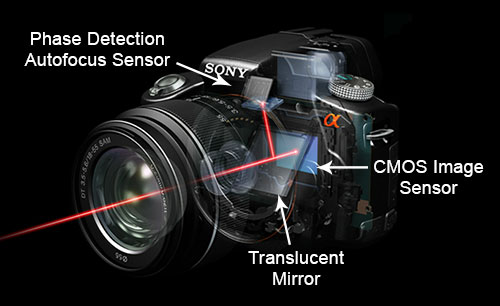
Since the mirror never has to move, Live View is in essence always on, which allows for less time between shots and continuous autofocusing even for movies.
Also, you can use the electronic viewfinder when shooting movies. With the other cameras, you have to be in Live View mode to capture movies, which means that the optical viewfinder is not operational and you are limited to looking at the three-inch screen.
As an added bonus, to start recording a Movie on the Sony a65, you simply push the red Movie button. As you will see later, the process is not so straightforward on the other cameras.
The one drawback to this translucent system is that some of the light coming through the lens is constantly being diverted to the autofocus sensor. Light is a precious commodity when photographing, but the amount of light being lost is considered insignificant.
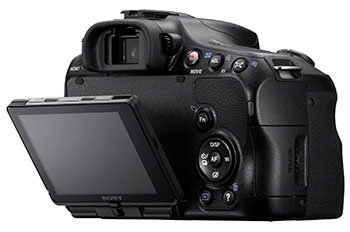
As for the rest of the design, the layout of buttons and controls is sensible, without any major annoyances.
And even though the electronic viewfinder is one of the best of any cameras on the market, many photographers, young and old, will enjoy the convenience of the articulating screen.
Unlike the Canon T4i, the Canon T3i and the Nikon D3200, which have the screen hinge on the left side, the a65's hinge is on the bottom, which makes it a bit awkward in certain positions, but still appreciated when creaky knees do not want to bend for an ant's POV shot.
Image Quality
The image quality produced by the Sony a65's 24MP sensor and BIONZ image processor is excellent. And the extra resolution of the 6000 x 4000 pixel images can come in handy when you need to crop your photo but still wish to print it at an 8 x 10 or larger size.
One of the snipes at stuffing 24MP onto an APS-C sensor is that the images can exhibit more noise than a sensor with fewer pixels. Indeed, shots taken with an ISO over 1600 start to exhibit noise, which is usually not distracting.
But if you are capturing JPEGs at ISO's over 6400, the noise might be unacceptable to a more discerning eye.
In this PhotoScope comparison, you can see how noise becomes more apparent as the ISO value becomes larger. To begin, if you click the PhotoScope link, the image on the left has the ISO at 100, the one on the right is ISO 6400. If you roll the Scope over the blue and purple label on the olive jar, you can clearly see the noise in the right image. Cycle through some of the other ISO settings to judge how the a65 fares.
One of the ways of controlling the quality is to shoot in the RAW format and then post process the images in a program like Adobe's Camera Raw or Apple's Aperture.
If that sounds like way too much bother, then when you shoot JPEGs try to keep the ISO at 1600 or less and you should be pleased with the results.
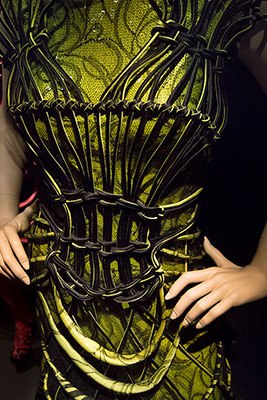
The image on the right, (from the Gaultier exhibit at the De Young Museum), was originally captured by the a65 as a RAW file at an ISO of 3200. (Click it to see a higher resolution rendering.)
The video quality from the a65 is very good. In fact, this camera is the choice over the others for shooting video for a couple of reasons.
First, the a65's continuous autofocus feature is better than the rest. It seems quicker with less back and forth searching. Also the focus servo is quieter, though it is still loud enough to be recorded by the internal microphone.
In addition, the ability to use the viewfinder when recording a movie can be invaluable in bright light situations.
With that said, DSLRs are not the perfect video cameras. Most of them have a built-in limit of 20 minutes continuous recording. And often they will stop before that time because they are overheating, which is definitely not ideal for event videography.
Features
The Sony a65 is the most feature laden camera in the shootout with goodies like HDR (High Dynamic Range), Panorama and 3D shooting modes.
Sony even offers two sweep panorama settings, Standard and Wide (a whopping 12416 × 1856 pixel image).
Original image was 7438 × 1685 pixels
Of course, the menu also includes the prerequisite list of picture effects (like Toy Camera, Pop Color and Partial Color) and scene modes (like Portrait, Sports Action, Macro, and Landscape).
On a less flashy level, the camera provides an integrated image stabilization system, which works no matter what lens is attached.
The a65 is also the only model in the shootout with built-in GPS. When activated, it will tag your photos with longitude and latitude coordinates that can be mapped in programs like Flickr.
Verdict
The Sony a65 is definitely the best camera in this shootout and if you are ready to drop about $1000, the features and image quality of this 24MP Sony Alpha make it money well spent.
If you want to leverage the inherent goodness of this 2 Camera Guys Best Mid-range DSLR, then bypass the kit lens package and opt for the body only and a higher quality Sony prime lens.
Sony a65 Photo Gallery
More about the Sony a65
In This Shootout:
The Shootout
Sony a65 Review
Canon T4i Review
Canon T3i Review
Nikon D5100 Review
Nikon D3200 Review
Reader Comments(8 comments)
|
Posted Oct 10, 2013 8:31:16 PM
|
|
By Big Mike |
Post a Comment Alert Moderator |
|
Posted Nov 2, 2012 8:54:18 PM
|
|
By Kuro |
Post a Comment Alert Moderator |
|
Posted Oct 31, 2012 11:52:07 AM
|
|
By Peteralex |
Post a Comment Alert Moderator |
|
Posted Sep 2, 2012 7:49:54 PM
|
|
By krazi311 |
Post a Comment Alert Moderator |
|
Posted Aug 28, 2012 3:30:02 PM
|
|
By Dick De Jong |
Post a Comment Alert Moderator |
Suggesting lenses for others is always a tough call for reasons too long to list.
If you are interested in high quality and are ready to make the commitment, then Zeiss lenses are great choices, but they come at a premium price tag.
For example, the Sony 85mm F1.4 ZA Carl Zeiss Planar T* is a wonderful portrait prime lens. Of course, at $1600, it's almost twice the price of the a65 body alone. But good lenses can last through multiple generations of cameras.
|
Posted Aug 28, 2012 2:55:55 PM
|
|
By Dick De Jong |
Post a Comment Alert Moderator |
I've been shooting video for decades and I'm still not convinced that any of these DSLRs are the perfect solution for capturing video. (I listed many of those reasons in my article, Making Home Movies: http://www.2cameraguys.com/Making-Home-Movies-with-Digital-Cameras.htm)
With that said, I do not discount your preference of the T4i over the a65 when shooting video. I will say that if you plan to use autofocus with any of these cameras, then expect to capture segments of out of focus searching, which you will need to edit.
And if you want higher quality audio, then you will need to use an external microphone and ideally a good audio recorder.
I'll admit that I am still rating these cameras more for their still image abilities and less on their video. Accordingly, the Sony a65 is on the top of my list. But as I've said, the T4i is a very good camera, which you should enjoy.
|
Posted Aug 14, 2012 12:06:07 PM
|
|
By frazzywig |
Post a Comment Alert Moderator |
|
Posted Aug 9, 2012 6:53:25 PM
|
|
By Art |
Post a Comment Alert Moderator |


